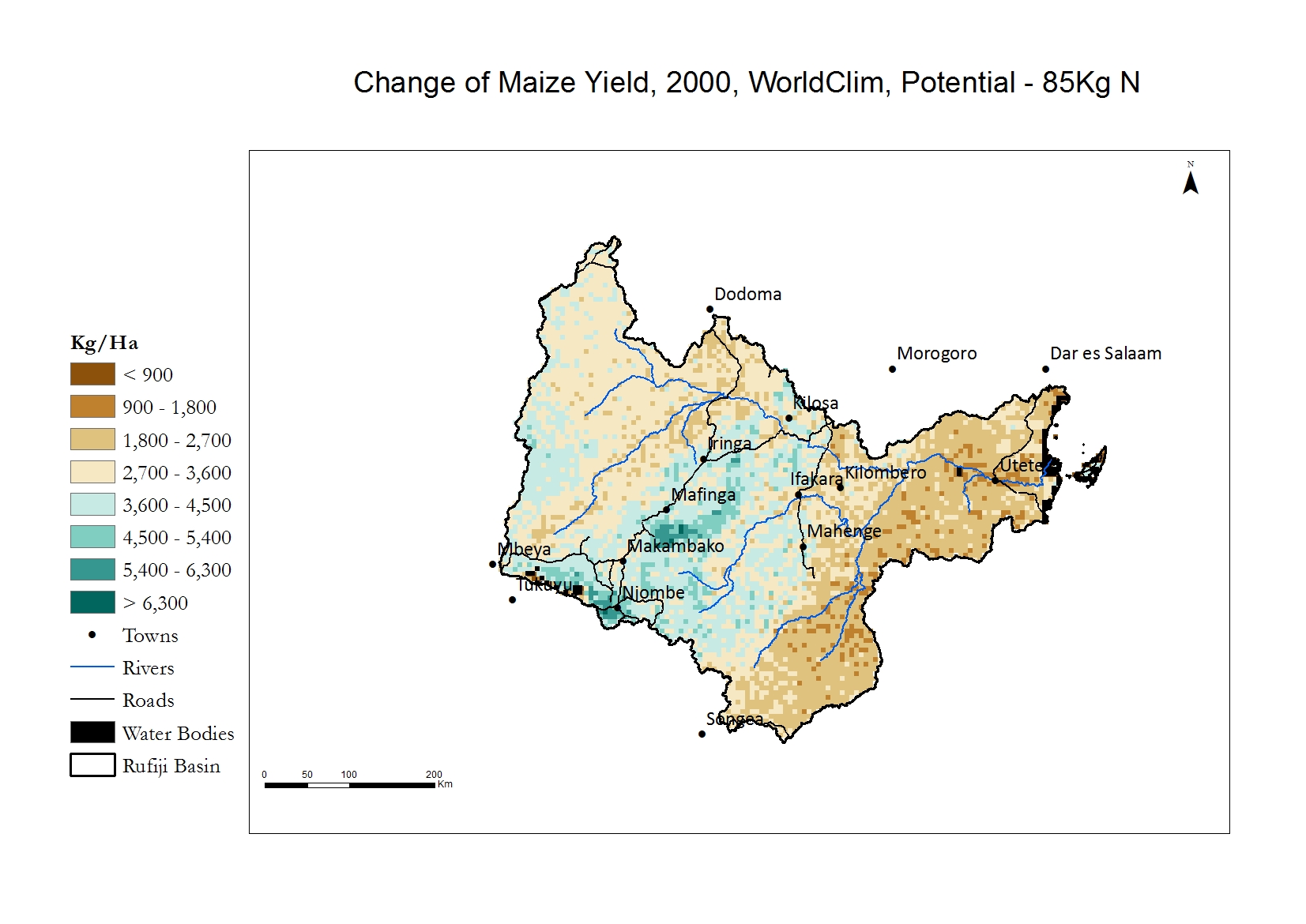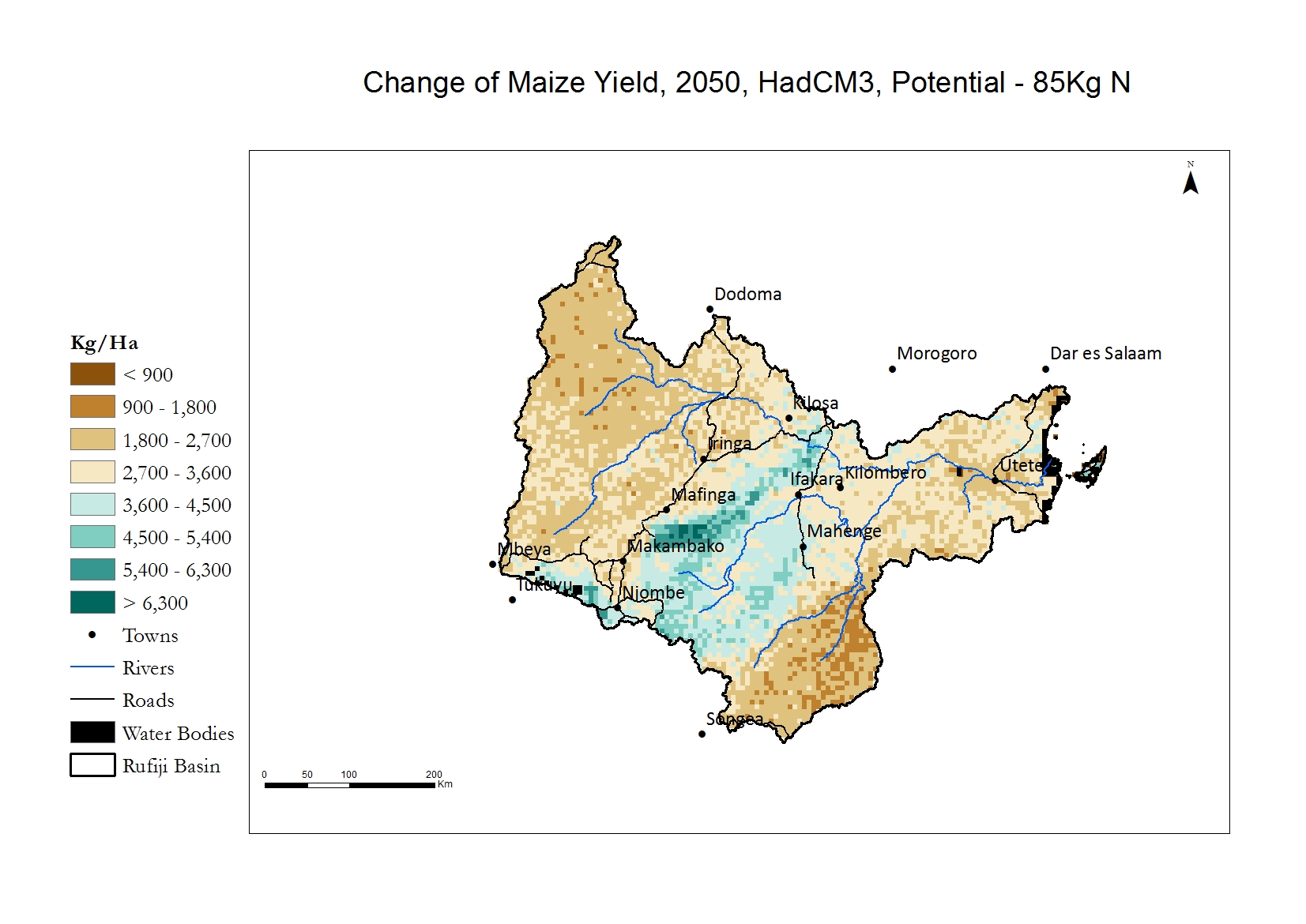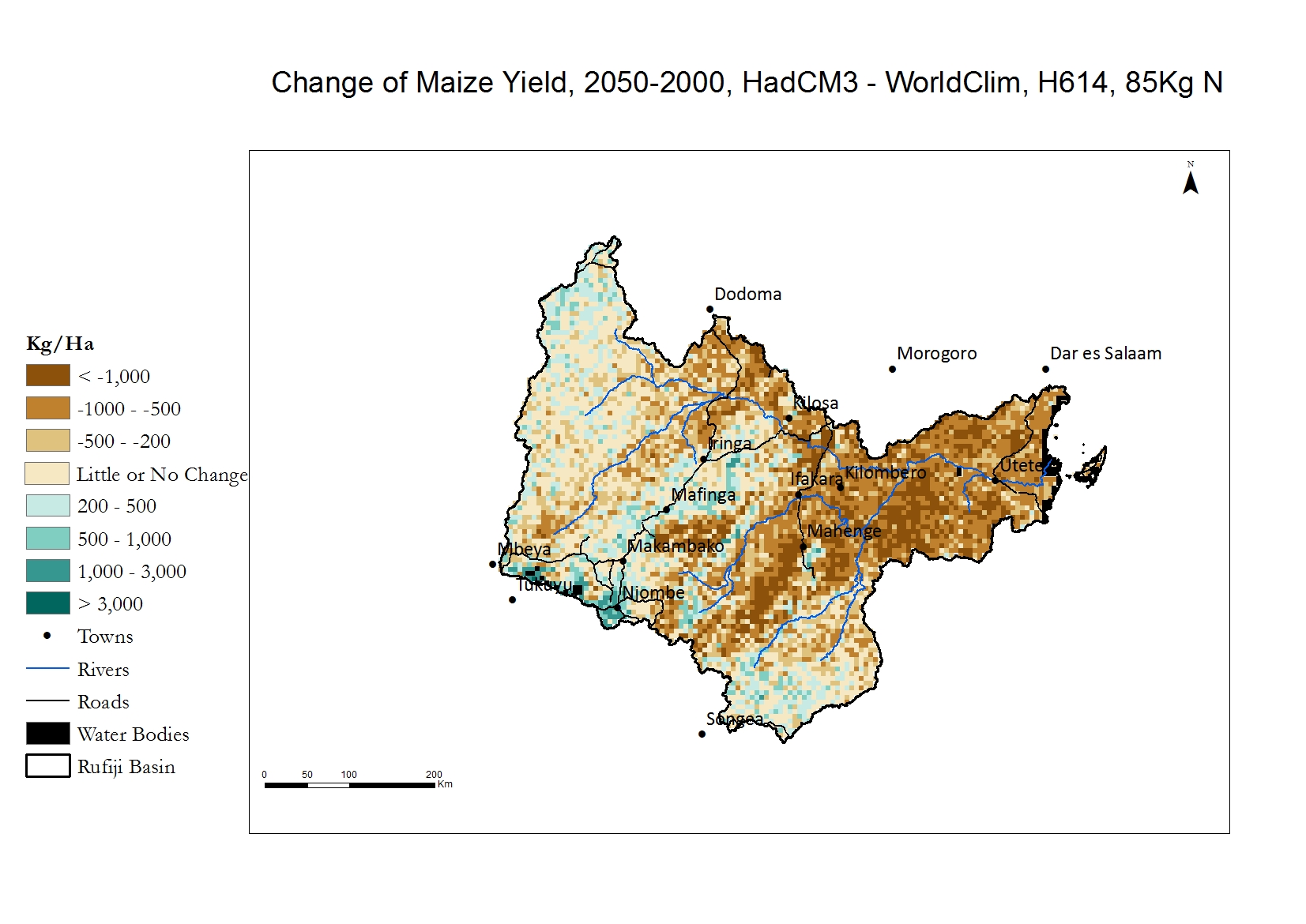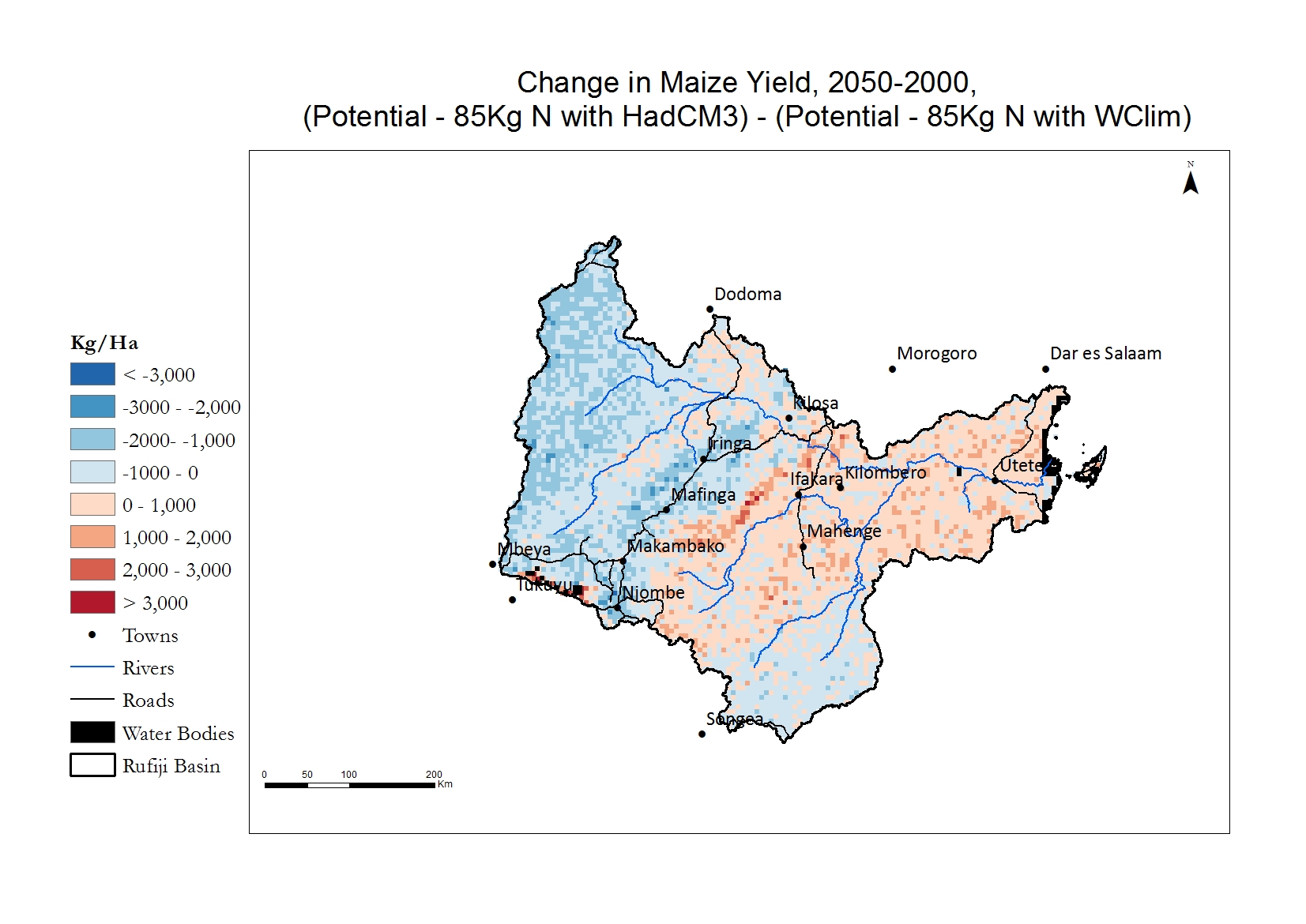Irrigation Effects
Perhaps the most important yield limiting factor in the Basin is water. Supplying supplemental water, or irrigation, is a potentially critical adaptation technology because the rising temperatures will lead to a higher demand for water, yet precipitation is not expected to rise. This section compares simulated maize yield under rainfed and irrigated conditions.
Current
The map on the left is the maize yield under rainfed conditions only, whereas the map on the right is the maize yield with irrigation, or "potential" (both are simulated with the same climate and variety). Please note the different legends. Whereas the yield under rainfed conditions only reaches to a maximum of 4,000 kg/ha, the yield with irrigation reaches over 8,000 kg/ha across much of the cooler zones. The yield of the irrigated maize is not as high in the east because of the negative effects of heat.
The difference map provides information on how much additional yield is obtained with irrigation. The most benefit to irrigation is in the cooler areas of the Highlands, where over 4,500 kg/ha or more is obtained. The relatively cool but dry areas west of the Highlands also benefit from irrigation. However, in the warmer areas, only approximately 1,800 kg/ha or less additional yield is produced.
Future - 2050
In the future, using the HadCM3 GCM, the irrigated maize is still expected to produce a much higher yield than the maize grown under rainfed conditions (please note the different legends on the two maps). The irrigated maize yields almost double.
However, the yields of both rainfed and irrigated maize have declined compared to under current climate condition. As the difference map reveals, the additional yield provided by irrigation is also less than under current climatic conditions. The warmer temperatures in the future repress maize yield, even when it is irrigated.
Change
The change maps provide information on how much the yield is expected to decline in the future. Under rainfed conditions, the biggest yield loss is in the warmest area, where is declines by around 1,000 kg/ha, but elsewhere yield is not as impacted. However, the yield loss in the irrigated maize is largest west of the Highlands, where it is dry but temperatures had been conducive to maize. With the rising temperature, maize does not respond as much to the additional water.
In other words, irrigation is a potentially critical adaptation technology to address the rising demand for water with warming temperatures, but the additional yield benefits of irrigation will decline because maize growth and reproduction will be restricted by the heat.
Comparison
The sliders illustrate the distribution of yield under current and then under future climate conditions for rainfed and irrigated maize.
 Current
Current
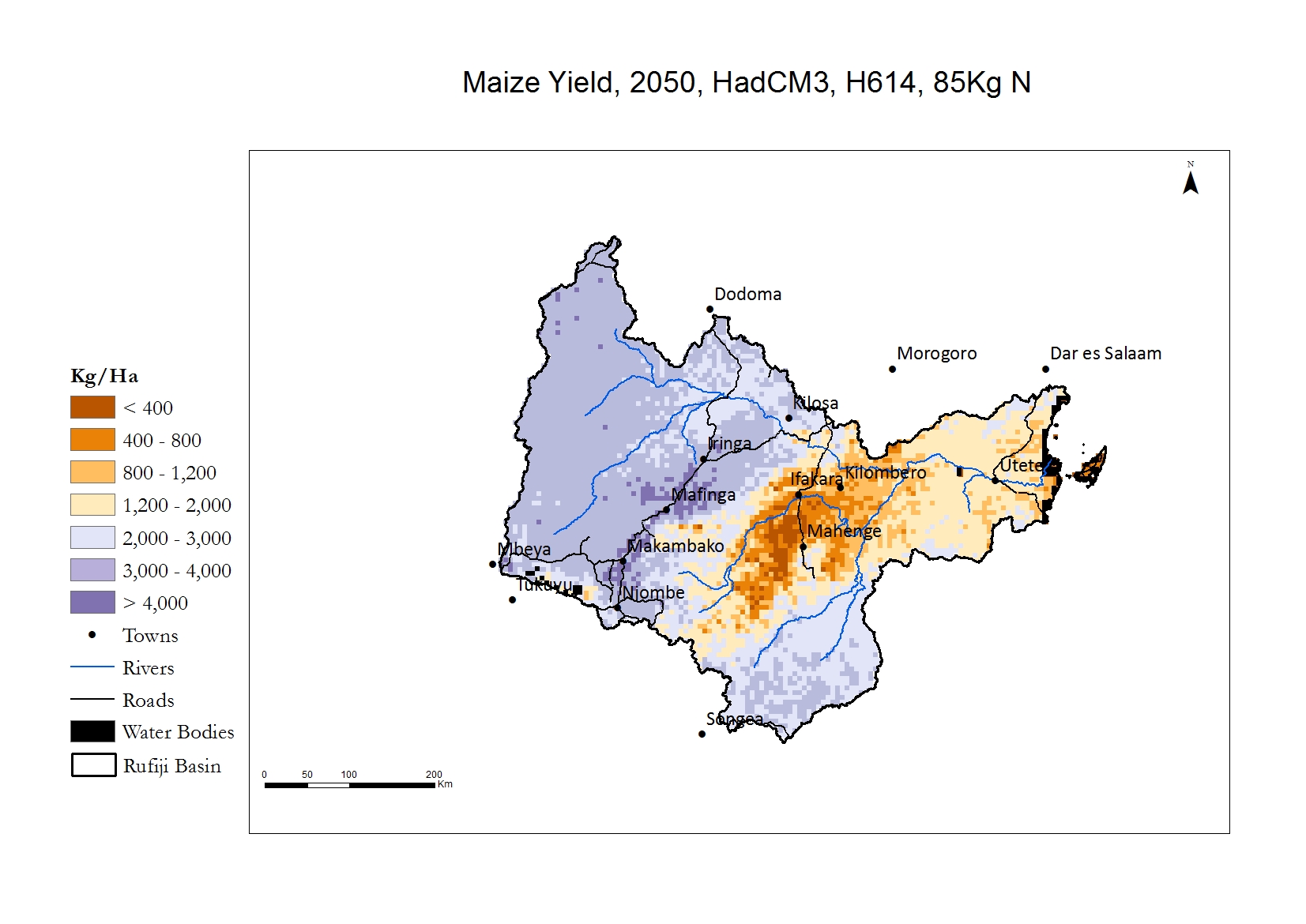
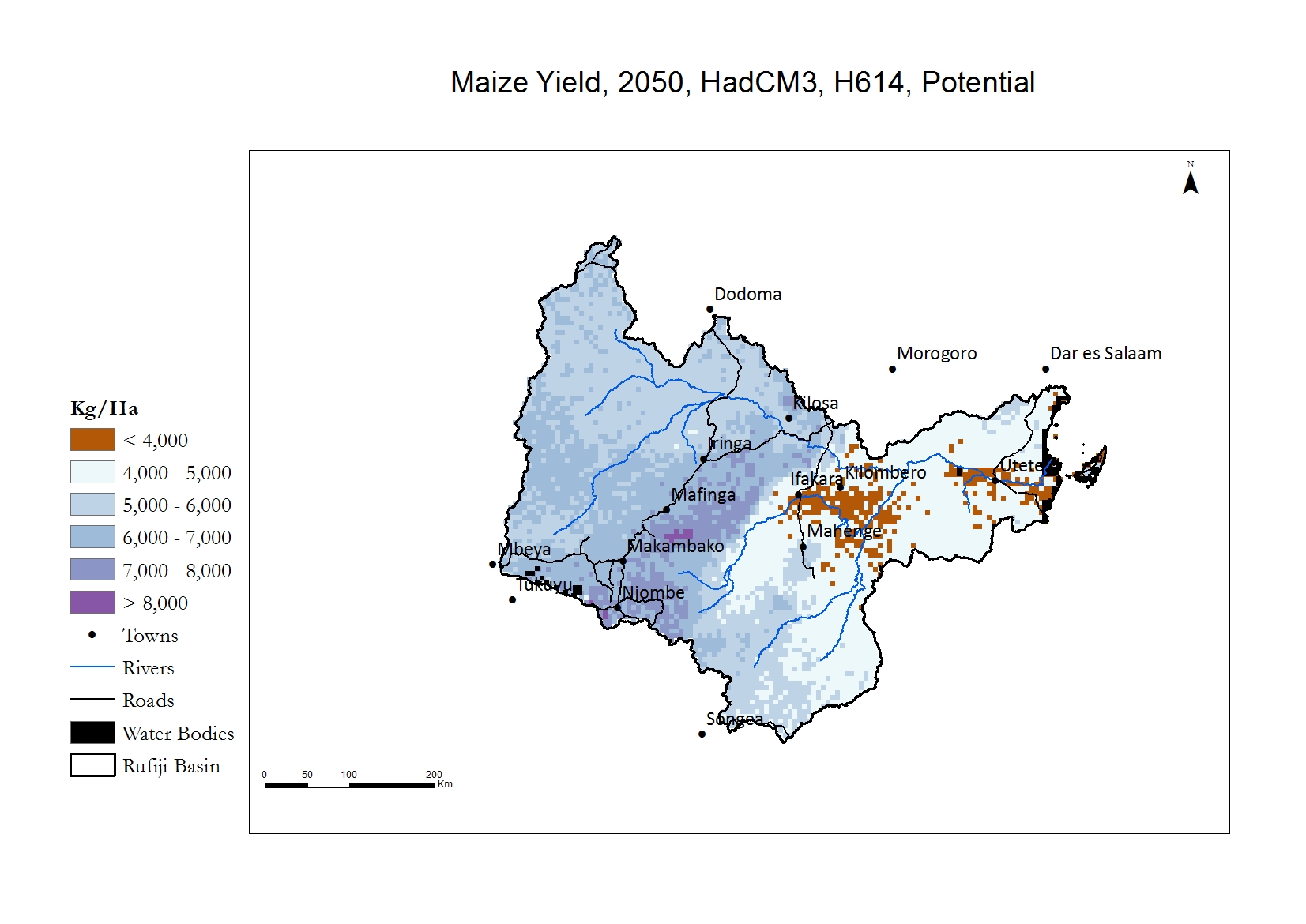
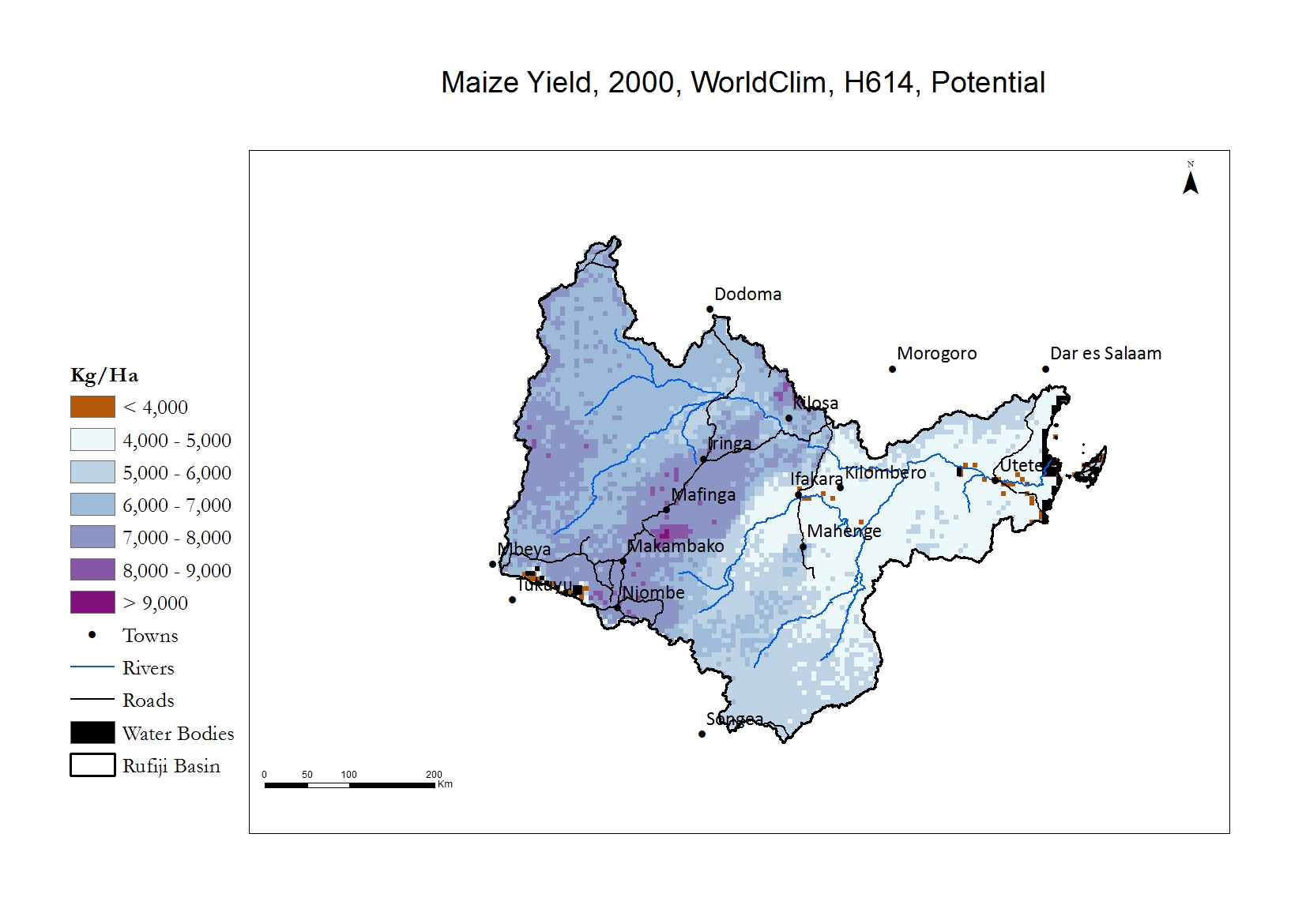 Current
Current
